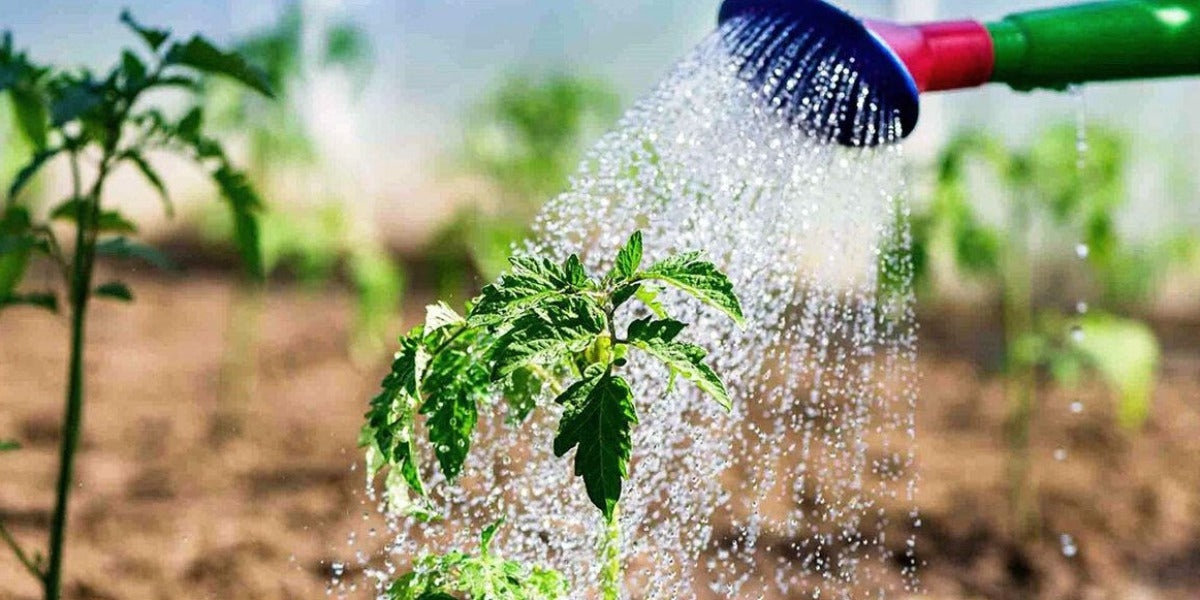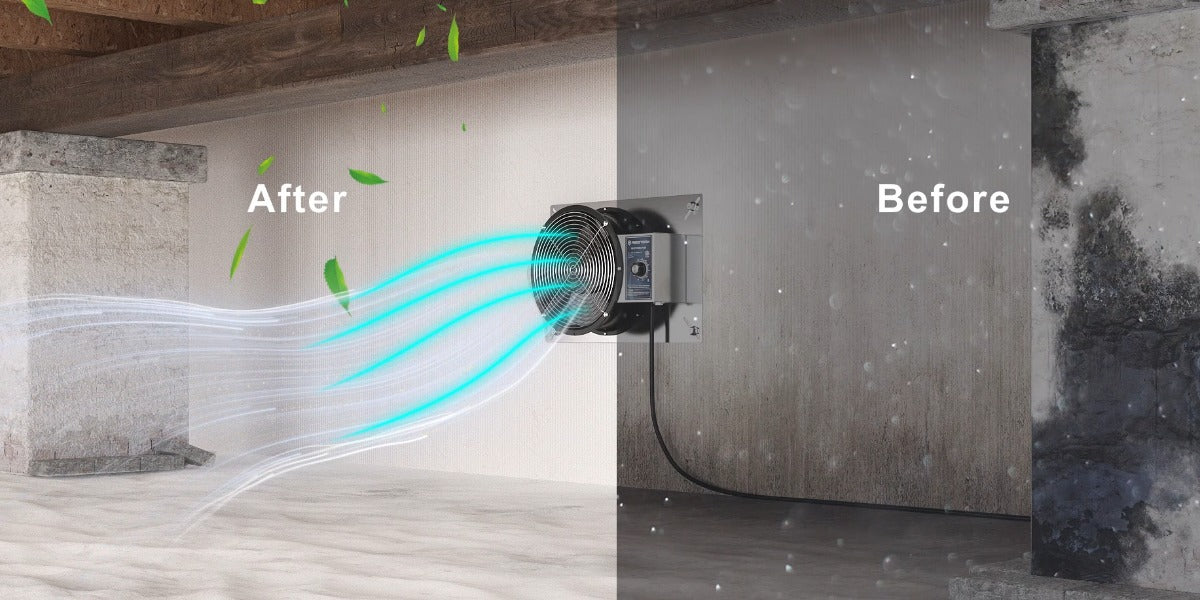“Is water from a dehumidifier good for plants?” This question surfaces when people want to reuse and recycle gray water at home. In the search for sustainable living, gray water has emerged as a practical solution for conserving precious resources.
Gray water, which includes water collected from dehumidifiers, helps to reduce the strain on drinkable water supplies, especially during dry periods and droughts. If you own a dehumidifier, you may have noticed your dehumidifier’s reservoir filling up. “Maybe you can use dehumidifier water for plants,” you’re probably thinking.
That way, you will have enough water for the plants on your windowsills, shelves, hanging baskets, or garden. However, can you use dehumidifier water for plants? Is water from a dehumidifier good for plants?
Abestorm, a leader in crawl space dehumidifiers and air quality solutions, will answer these questions. By the end of this article, you will know if you can use dehumidifier water for plants, the potential risks, and what kind of plants can survive on it.
What is Dehumidifier Water?
Before we answer what dehumidifier water is, you have to start with how a dehumidifier works. Dehumidifiers draw moisture from the air to reduce humidity levels in indoor spaces. They work through a process that involves cooling the air: the dehumidifier pulls in humid air and passes it over cold coils.
As the air cools, the moisture in the air condenses into water droplets, which are then collected in a reservoir within the dehumidifier. The water collected and stored in the reservoir is called “gray water.”
It's important to note that dehumidifier water is not distilled water. Distilled water is produced by boiling water to steam, which is then condensed into liquid form, leaving impurities behind. In contrast, dehumidifier water is simply condensed from the air without boiling, so it may still contain some contaminants such as bacteria, mold, and other particles present in the air.
Purity and Composition of Dehumidifier Water
Dehumidifier water is sometimes compared to distilled water due to its low mineral content. However, water from the dehumidifier can be more contaminated with substances that float around and materials inside the dehumidifier. Understanding these potential contaminants is crucial for making informed decisions about this water safely and effectively. These contaminants include:
Bacteria, mold, and microorganisms from the air.
During the dehumidifier operation, particles such as bacteria, mold spores, or other microorganisms present in the air can become trapped in the water. Since the water in a dehumidifier's reservoir is not subject to the same stringent filtration or sterilization processes as drinking water, these microorganisms can accumulate over time.
This leads to increased contamination levels, mold growth within the dehumidifier, and more microorganisms like fungi and protozoa.
The possible presence of heavy metals from cooling coils. (copper, zinc, aluminum)
Another concern with dehumidifier water is the potential presence of heavy metals, which can leach into the water from the components of the dehumidifier itself, particularly the cooling coils. These coils are often made from metals such as copper, zinc, and aluminum, which corrode over time.
While some of these metals may be considered essential nutrients, it’s important to note that excessive exposure can harm both humans and plants.
Therefore, the purity level of dehumidifier water is questionable for direct consumption or plant use.
Is Dehumidifier Water Safe for Plants?
When it comes to using dehumidifier water for plants, it’s essential to distinguish between different types of plants and their specific needs. While dehumidifier water may not be suitable for all plants, it is for some other types.
Indoor Plants:
Dehumidifier water is generally safe and can offer several benefits for non-edible indoor plants. These plants, which include common houseplants like ferns, spider plants, and philodendrons, can thrive with this recycled water.
One of the reasons it’s safe is due to the water’s similarity to rainwater. If the air in your home is clean (a bit like rainwater) then you can use the water on your indoor plants. The reason is that both waters are considered "soft" water, meaning they contain low levels of dissolved minerals such as calcium and magnesium.
This softness of water is beneficial to plants, as hard, mineral-rich water leads to salt buildup in the soil, which can damage plant roots over time. You can prevent this issue and promote healthier soil conditions for your indoor plants with dehumidifier water.
Note: Don’t use dehumidifier water if your indoor plants suffer from a fungal disease. The spores might have gotten trapped in the dehumidifier so it’s not a good idea to reuse it for your plants.
Here are a few considerations to keep in mind:
Cleanliness of the Dehumidifier – The safety of dehumidifier water largely depends on the cleanliness of the dehumidifier unit itself. Regular maintenance and cleaning prevent the buildup of bacteria, mold, and other contaminants in the water reservoir. You can minimize the risk of transferring harmful microorganisms to your plants by keeping your dehumidifier in good condition.
Watering Frequency and Volume – Monitor the watering needs of your indoor plants carefully. Overwatering can lead to root rot and other issues, regardless of the water source. Ensure that your plants have proper drainage and that you’re not overusing the dehumidifier water. A balanced approach to watering will keep your plants healthy and thriving.
Observation of Plant Health – Observe your plants for signs of distress or unusual growth patterns after switching to dehumidifier water. While dehumidifier water is similar to rainwater, every plant species has unique requirements and tolerances. If you notice any negative effects, consider adjusting your watering routine or alternating with tap water occasionally.
Outdoor Plants:
Using dehumidifier water for outdoor plants is an effective way to conserve drinking water and ensure that your garden flourishes, even during periods of drought. However, there are important factors to note to ensure the health and safety of your plants.
Types of Plants – Not all plants are equally tolerant of gray water. While ornamental plants, shrubs, and trees generally fare well with gray water, edible plants need caution.
Water Quality and Contaminants – The quality of dehumidifier water can vary based on the cleanliness of the dehumidifier unit and the environment in which it operates. You reduce the risk of transferring harmful substances to your outdoor plants by ensuring your dehumidifier is clean. This is also applicable to indoor plants.
Soil Health – Gray water, including dehumidifier water, can affect soil health. The repeated use of gray water can lead to the accumulation of salts and other minerals in the soil, which may harm plant roots and reduce soil fertility. To mitigate this risk, monitor soil health regularly and consider soil amendments or occasional flushing with potable water to prevent salt buildup.
Watering Techniques – When using dehumidifier water for outdoor irrigation, it is important to employ appropriate watering techniques. Drip irrigation or direct soil application methods can help minimize the contact between gray water and plant leaves, reducing the risk of foliar diseases. Avoid overhead watering, as this can increase the likelihood of spreading contaminants to the entire plant.
Edible Plants:
While non-edible indoor and outdoor plants can generally benefit from this recycled water, the same cannot be said for plants intended for consumption.
The composition of the dehumidifier water reveals potential contamination of bacteria, mold, and microorganisms. Using this contaminated water on edible plants can transfer harmful bacteria to the plants, posing a risk of foodborne illnesses when the produce is consumed.
Mold on edible plants is potentially dangerous to the produce and triggers allergic reactions and other health issues in sensitive individuals.
Also, long-term exposure to heavy metals through contaminated water can accumulate in the soil and be absorbed by plants, posing health risks when the plants are consumed.
So it’s best to avoid any gray water usage for edible foods, especially for plants that are eaten raw (e.g., Herbs, Salad Greens). Extra caution must be placed on plants eaten raw because there’s no benefit of cooking to remove pathogens. Direct consumption even with washing can pose severe health risks.
Safer Alternatives for Watering Edible Plants
To ensure the health and safety of your edible plants, it is advisable to use clean, potable water for irrigation. Here are some alternative practices to consider:
Rainwater Harvesting: Collecting and using rainwater is an excellent alternative to dehumidifier water. Rainwater is naturally soft and free from the contaminants typically found in dehumidifier water. It’s also environmentally friendly and can help conserve potable water resources.
Filtered Water: If rainwater is not readily available, consider using filtered tap water. Home filtration systems can remove many contaminants in tap water, providing a safer option for watering edible plants.
Gray Water Systems: For those committed to using recycled water, specialized gray water systems designed for garden irrigation can be a viable option. These systems often include filtration and treatment stages that provide healthy water for edible plants.
Conclusion
That’s it. Your questions – “Can you use dehumidifier water for plants?” “Is water from a dehumidifier good for plants?” has been thoroughly answered.
But here’s a recap:
Using dehumidifier water for plants is an excellent method to conserve water. However, you have to be mindful of the potential contaminants that come with the gray water. Contaminants like bacteria, mold, fungi, heavy metals, and other microorganisms.
Dehumidifier water can be a valuable resource for non-edible indoor and outdoor plants, similar in composition to rainwater. However, it is advisable to avoid using dehumidifier water on edible plants, particularly those consumed raw, to prevent the risk of contamination and severe health issues.
To reduce risks with dehumidifier water: Ensure clean air around the dehumidifier, regular maintenance, and careful application of the gray water.
One Last Thing
One thing that determines your dehumidifier usage is the quality of your dehumidifier unit. It is even better when backed by a sure guarantee, a 10-year warranty, and easily accessible replacement parts.
With Abestorm crawl space dehumidifiers, you can effectively reduce humidity levels, improve air quality, and contribute to water conservation efforts. Visit Abestorm today to pick the right dehumidifier for you and If you need any assistance, contact our team for support.









Shop For Dehumidifier